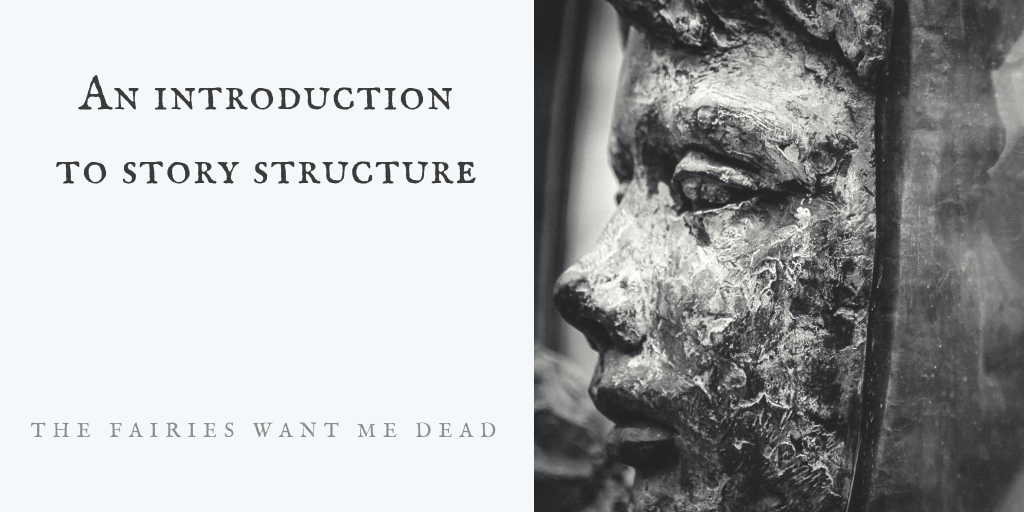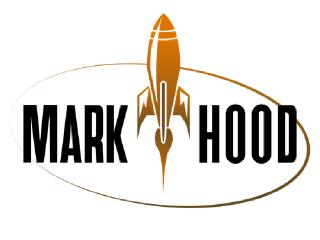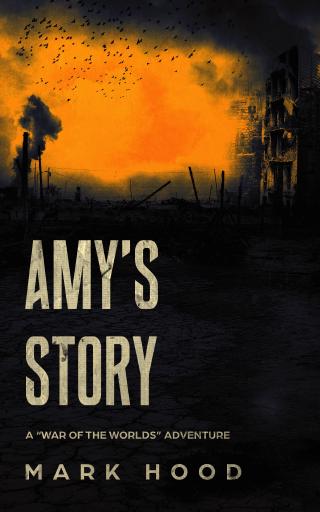This is the first in a short series of posts about Story Structure. Obviously as someone writing their first novel it’s not something in which I’m claiming to be an expert, but an understanding of basic story structure forms an important part of crafting a compelling, readable, and satisfying story.
This is a series of posts - now completed - which you can read in full here:
- Part 1 - Overview (This article)
- Part 2 - The First Act
- Part 3 - The Second Act
- Part 4 - The Third Act
- Part 5 - Summary

I’ve read a few books on the topic, a larger number of blog posts and an even greater number of pieces of advice, but my favourite work on the subject is K.M. Weiland’s “Structuring Your Novel” . Much of the explanation I’m going to give in this series is adapted from this book, but I advise you to pick up a copy for yourself - it’s a very simple but in-depth guide.
She also has a great website Helping Writers Become Authors which is chock-full of advice, resources and helpful things for budding (and established) authors. Don’t miss her weekly podcast either, as it’s great advice condensed into a short 15 minute listen.
Let’s start with the simplest structure to work with, and one that probably 90% of all novels, movies and other stories follow - the three-act structure. I’ll detail the key parts of each act in a separate post, but for now let’s discuss what it means at the high level.
There are a number of ways to describe the three acts, but the one which stuck with me was this one (note that I tend to use ‘he/him’ as a pronoun just for simplicity - feel free to substitute with ‘she/her’ if you prefer):
- Act One: Put a man in a tree.
- Act Two: Throw rocks at him.
- Act Three: Get him out of the tree.
If that’s a little too silly for your tastes, then you can think of it more formally as:
- Act One: Setup
- Act Two: Conflict
- Act Three: Resolution
But either way I hope you can see where we’re going with this. The first act will have to introduce your main character, or protagonist. It’ll also detail his current life to a greater or lesser degree, and entice him into the plot you have waiting for him (get him up that tree). By the end of the first act, he’s well-established as a person and has been placed in a situation that’s about to change him forever.
Act two will throw rocks at him - perhaps literally, but certainly metaphorically. The main conflict will be introduced here, giving him a purpose different from the one with which he might have started. Obstacle after obstacle will prevent him from reaching his goals, drive him to despair and convince the reader that he’ll never be able to reach the happy ending we all really want to see. The second act usually ends when the character is at their lowest, facing defeat against insurmountable odds.
And act three will then have him overcome those odds, defeat the antagonist, win the day… or at least end the story changed from how he started.
Now I’m sure that right now you’re imagining a half-dozen stories that neither fit this outline nor even appear to, but I assure you that the vast majority do - even those which appear to have a character who never changes, either for the better or worse. And it’s true that there are convention-breaking examples out there, as there are for any “rules” you might care to imagine. But let’s take a handful of examples to show exactly how useful understanding this structure is, and how most stories fit the outline better than you might have thought. I’ve selected the following because they’re well-known and you should be familiar with them, but I could have picked almost any book or movie at random and had similar results.
Star Wars: A New Hope
Act One: Setup
We see Luke’s day to day life, as a bored farm hand. Luke’s Uncle buys the droids, R2D2 wanders off and Luke chases him down and meets Ben. He refuses to leave Tatooine with him, and instead returns home but discovers his family have been killed. He agrees to go with Ben after all to deliver the Death Star Plans to the rebellion.
Act Two: Conflict
Luke, Ben & Han are captured by the Death Star tractor beam, and need to disable it to escape (obstacle 1). On the way they discover Leah is imprisoned (obstacle 2) and have to release her too. Obstacle after obstacle (trash compactor, stormtroopers, Darth Vader, tie fighter attack) prevent them from reaching their goal of escape, but eventually they do - reaching the rebellion but inadvertently leading the Empire right to their door.
Act Three: Resolution
After noticing a weakness in the super-weapon, Luke & the rebels attack the Death Star. The climactic space battle presents yet more obstacles, but eventually ends in Luke not only delivering the killing blow but also learning to trust the Force - his journey (at least for this movie) is complete.
Now this is shown from Luke’s point of view as he’s clearly the protagonist of the movie. However each character has their own arc, and arguably their own story line. Han Solo’s story could also be broken down as something similar - in act one he’s a smuggler looking for the next job. Act two throws obstacles at him & he decides to leave when at the first opportunity. Act three shows him growing a conscience and returning to the battle. Once you understand the three act structure you will see it everywhere, although it’s usually most clearly defined for the protagonist’s journey.
Despicable Me
Act One: Setup
Gru is a supervillain who’s lost his touch - outclassed by a rival who stole the pyramids. He decides to steal the moon, one gigantic heist to show he’s still got the ability, but is denied funding until he has the necessary shrink ray. He tries and fails to steal it from his new nemesis Vector, but notices the orphan girls selling cookies can just waltz right into the fortress and decides to adopt them to help him gain access.
Act Two: Conflict
He & the orphans face many obstacles on the way, including Gru’s own lack of affection for the girls. He almost ditches them but takes them to an amusement park where he stands up for Agnes against a crooked carnival game operator. She in turn offers to help fund Gru’s project when the bank refuses again, and he comes to love them.
Unfortunately his second-in-command believes Gru’s losing his touch again and arranges for the girls to go back to the orphanage.
Act Three: Resolution
Gru steals the moon, fulfilling his original goal, but it’s a hollow victory. He misses the girls’ ballet recital, and then discovers they were kidnapped by Vector. He launches a rescue mission, giving up the moon to save them and becoming a hero instead of a villain. In the process he wins over Margo who had never quite come to trust him.
Indiana Jones and the Raiders of the Lost Ark
Act One: Setup
We see Indy’s ’normal’ life, daring escapes from complex traps, gathering priceless artifacts for museums, and then going back to teaching at the university. The US Government inform him that the Nazis are after the Ark of the Covenant and they want him to help them track it down first. He goes to find Marian to get the medallion he believes holds the key to finding the Ark.
Act Two: Conflict
Nazis burn down the bar, chase them all over the world and are always hot on their heels. Indy believes Marian is killed, solves the riddle of the map room, discovers Marian’s still alive - but doesn’t rescue her as it would tip off his enemies that he is there. He locates the ark and immediately loses it again. They escape, fight on a plane, chase down the Nazis in trucks and steal the Ark - only to have them board the boat and steal it right back, taking it away by submarine (along with Marian).
Act Three: Resolution
Indy infiltrates the Nazi base, tries and fails to take back the Ark, and he & Marian are tied up while the Nazis open the Ark. They all die, but Indy & Marian survive, and the ark is returned to the ‘safety’ of the US, where it’s locked away in a vault.
I hope you can see from these examples how a very simple idea of splitting a work into three acts can give clarity to the flow of a story - and I urge you to keep this structure in mind when you next read a book or watch a film; see if you can spot the three acts & determine where the breaks are. It’s easier in a movie as it’s shorter, and they tend to be roughly equal lengths - so if in doubt divide the running time by three and see how close the key moments are to those values!
In the next instalment I’ll look at Act One in more detail - breaking down the structure slightly more with the use of the same three examples.
If you want to know when the next blog post is done, sign up to the mailing list below and I’ll let you know!


![On Story Structure [Part 1 - Overview] On Story Structure [Part 1 - Overview]](/2018/10/28/on-story-structure-part-1-overview/Anintroductiontostorystructure_hu64cd13052ffc40949d5e73b42c763ac3_409409_320x0_resize_q75_bgffffff_box_3.jpg)